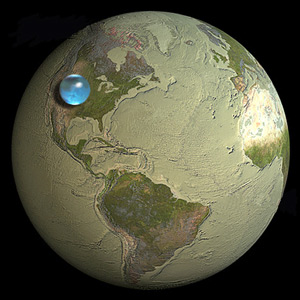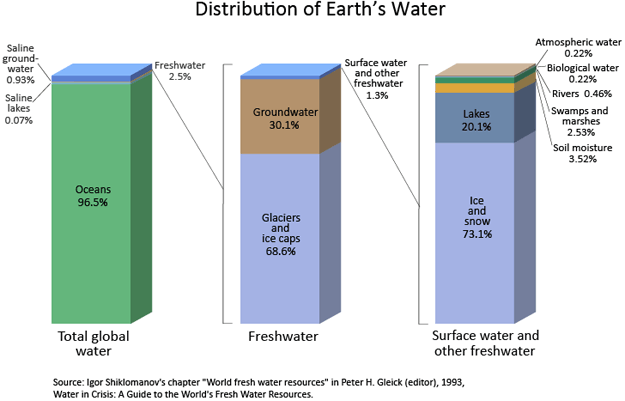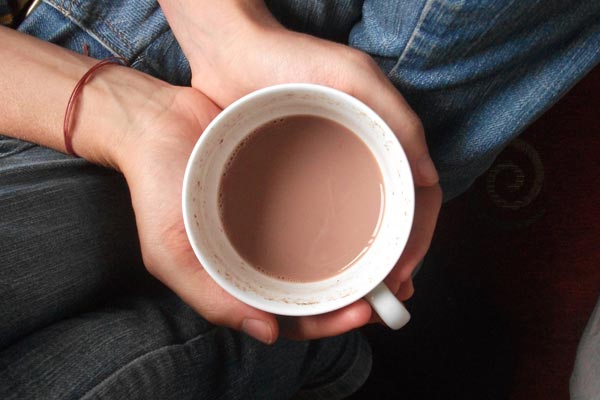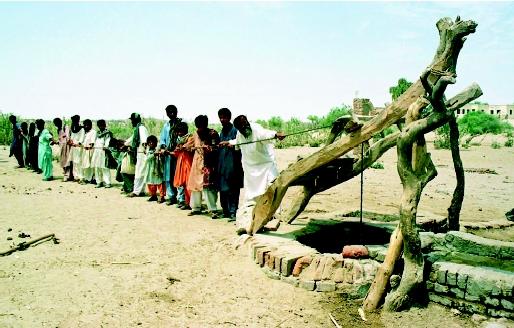Where is Earth’s water located and in what forms does it exist? You can see how water is distributed by viewing these bar charts. The left-side bar shows where the water on Earth exists; about 97 percent of all water is in the oceans. The middle bar shows the distribution of that three percent of all Earth’s water that is freshwater.

Picture of Earth showing if all Earth’s water (liquid, ice, freshwater, saline) was put into a sphere it would be about 860 miles (about 1,385 kilometers) in diameter. Diameter would be about the distance from Salt Lake City, Utah to Topeka, Kansas, USA.
Credit: Illustration by Jack Cook, Woods Hole Oceanographic Institution; USGS.
The majority, about 69 percent, is locked up in glaciers and icecaps, mainly in Greenland and Antarctica. You might be surprised that of the remaining freshwater, almost all of it is below your feet, as ground water. No matter where on Earth you are standing, chances are that, at some depth, the ground below you is saturated with water. Of all the freshwater on Earth, only about 0.3 percent is contained in rivers and lakes—yet rivers and lakes are not only the water we are most familiar with, it is also where most of the water we use in our everyday lives exists. Read more






